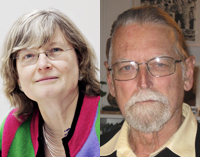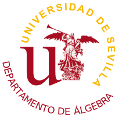 Hace unos días se ha sabido que el premio Fundación BBVA Fronteras del Conocimiento, en la categoría de Ciencias Básicas, ha sido concedido en su quinta edición a los matemáticos Ingrid Daubechies y David Mumford por “sus trabajos en teoría matemática, que han tenido una gran influencia en campos variados de aplicación, desde la compresión de datos hasta el reconocimiento de patrones”.
Hace unos días se ha sabido que el premio Fundación BBVA Fronteras del Conocimiento, en la categoría de Ciencias Básicas, ha sido concedido en su quinta edición a los matemáticos Ingrid Daubechies y David Mumford por “sus trabajos en teoría matemática, que han tenido una gran influencia en campos variados de aplicación, desde la compresión de datos hasta el reconocimiento de patrones”.
A ambos les une que desde la matemática pura y con enfoques multidisciplinares han buscado y formulado respuestas a problemas complejos y variados, evidenciando el poder transformador de las ciencias básicas.
El jurado reconoce en concreto a Daubechies (Houthalen, Bélgica, 1954), catedrática de la Universidad de Duke (Estados Unidos), por sus trabajos sobre “ondículas, que han derivado en un nuevo enfoque científico de la compresión de datos, con gran impacto en multitud de tecnologías, que incluyen la transmisión eficiente de audio y vídeo, y la imagen médica”.
Según el acta, a Mumford (Sussex, Reino Unido,1937), catedrático emérito de la Universidad de Brown (Estados Unidos) se le premia “por sus contribuciones al campo de la geometría algebraica y a las matemáticas de la visión artificial”. Y continúa: “Aplicó herramientas de cálculo de variaciones de la teoría de la visión y desarrolló modelos estadísticos en imagen y reconocimiento de patrones. Su trabajo ha tenido un impacto duradero tanto en las matemáticas puras como en las aplicadas”.
Ambos investigadores comenzaron sus carreras en ámbitos estrictamente teóricos, pero sin poner límites a una curiosidad intelectual que ha acabado por acercarles a aspectos más aplicados. Curiosamente han cruzado sus caminos: Daubechies se formó como física y acabó centrándose en las matemáticas, y Mumford ha tenido desde las matemáticas un importante impacto entre los físicos teóricos.
Mumford ha explicado, tras declararse ”enormemente agradecido” y “sorprendido” por el fallo del jurado, que se dedicó a las matemáticas puras porque le cautivó un profesor “capaz de explicar la geometría algebraica de forma que pareciera mágica”. Sus propios resultados, que él mismo describe como “la construcción de un mapa” que proporciona “una especie de vista de pájaro” de toda la geometría algebraica, fueron tan exitosos que en 1974, con solo 37 años, obtuvo la Medalla Fields.
Pueden seguir leyendo la noticia en la web de la Fundación BBVA.

